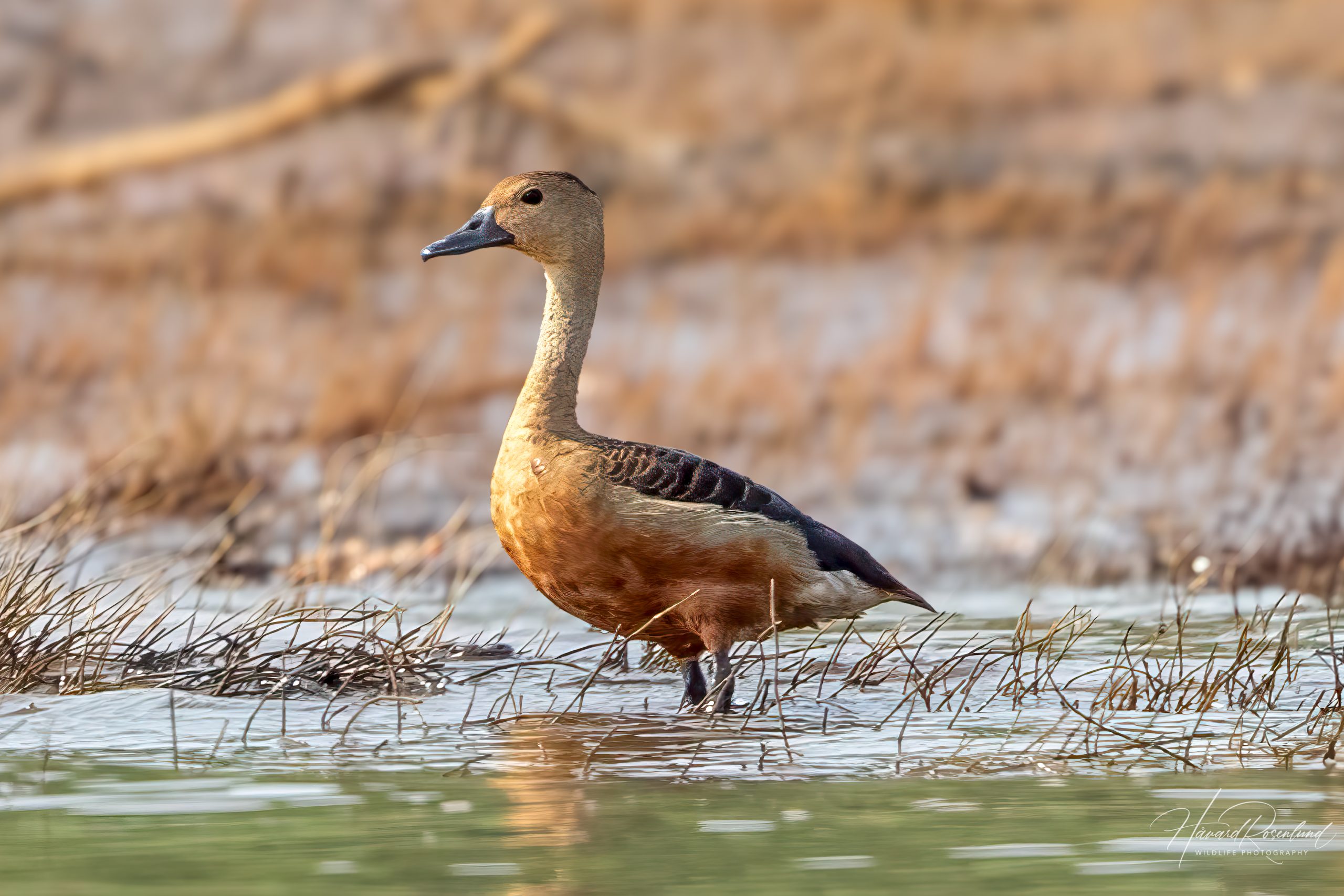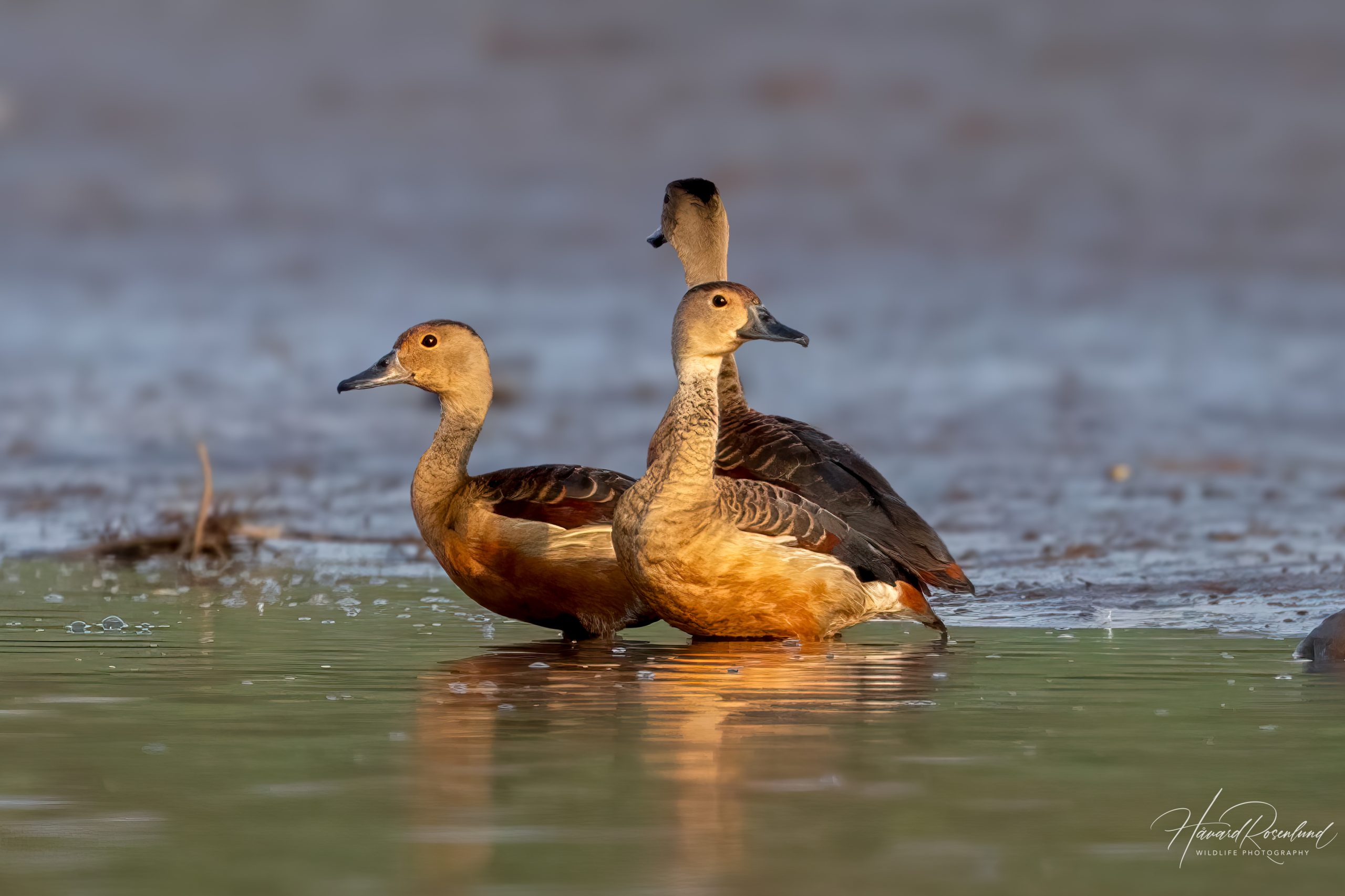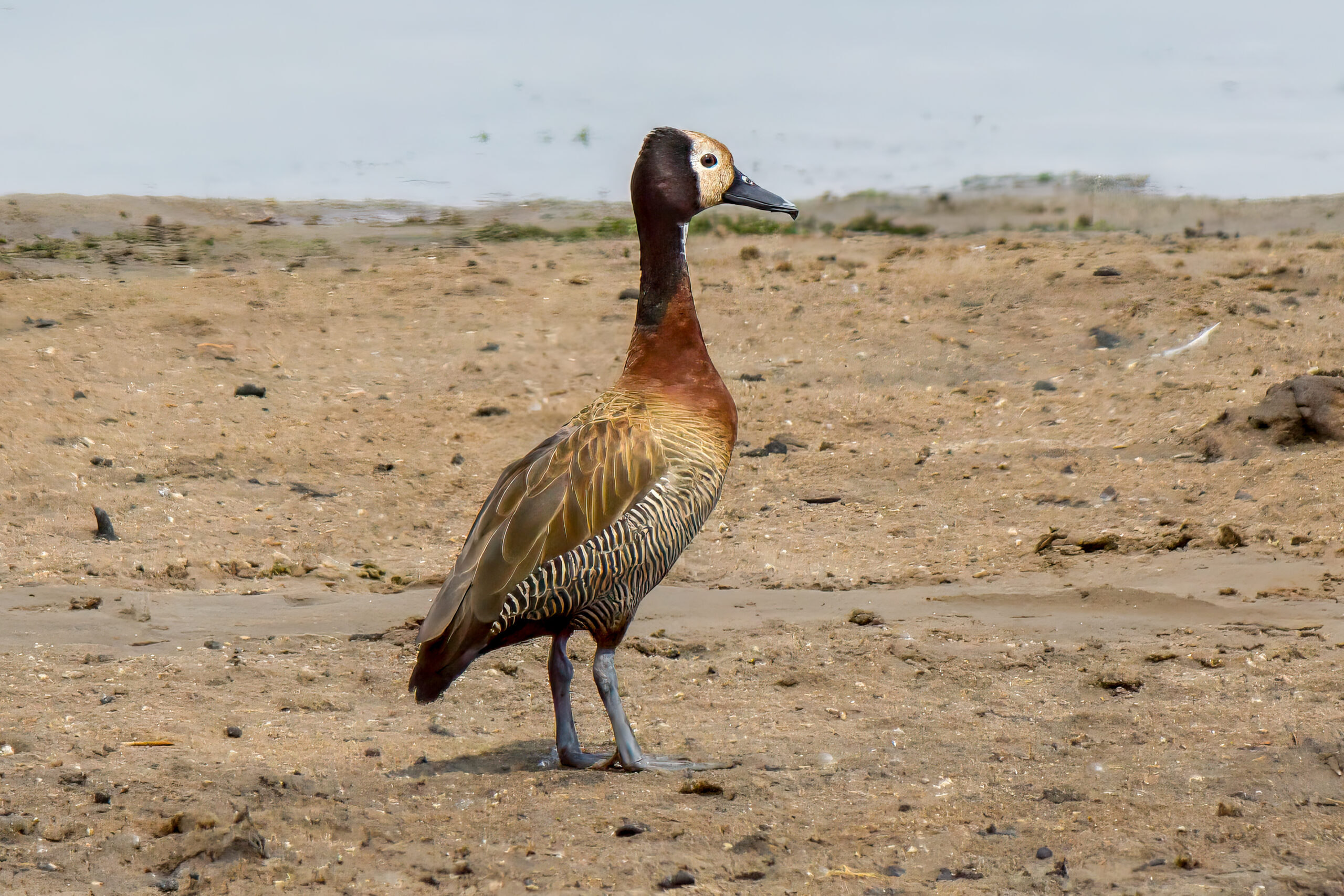Description
The lesser whistling-duck (Dendrocygna javanica) is a small duck species native to South and Southeast Asia. It is characterized by its relatively small size, with a body length of around 38–42 cm (15–17 in) and a wingspan of 65–80 cm (26–31 in). The plumage is predominantly light brown, with a darker reddish-brown belly. It has dark brown wings with a distinctive rufous or reddish-brown patch.. The bill is dark grey, and the legs and feet are also grey. This species is distinguished from similar ducks, such as the fulvous whistling-duck (Dendrocygna bicolor), by its smaller size, lighter coloration and different plumage patterns.
Diet & Habitat
Lesser whistling-ducks are found in a variety of wetland habitats, including freshwater lakes, marshes, ponds, and rice paddies. They are also often found in urban areas, thriving in artificial water bodies such as city ponds and reservoirs. These ducks are predominantly herbivorous, feeding on aquatic plants, seeds, and grains. However, they are known to consume small invertebrates and insects occasionally. They forage by dabbling at the water’s surface or diving slightly to reach submerged vegetation.
Behavior
Lesser whistling-ducks are gregarious birds, often seen in large flocks. They are known for their soft, high-pitched whistling calls, which give them their name. These ducks are mostly nocturnal, feeding at night and resting during the day. They are strong fliers and can travel considerable distances between feeding and roosting sites. Whistling-ducks are also known to perch in trees, which is uncommon for most duck species.
Nesting
The breeding season of the lesser whistling-duck varies across its range but generally coincides with the monsoon season. These ducks are monogamous, with pairs forming strong bonds. They often nest in tree cavities, but can also use artificial nest boxes or even ground sites hidden among dense vegetation. The female typically lays 8-12 eggs, which are incubated for about 22-24 days. Both parents share the responsibility of incubation and caring for the young. The ducklings are precocial and leave the nest shortly after hatching, becoming capable of flight within six weeks.
Status
The lesser whistling-duck is classified as least concern by the IUCN. Its populations are widespread and relatively stable across its range. However, habitat loss due to wetland drainage, agricultural expansion, and pollution poses potential threats to some populations.






